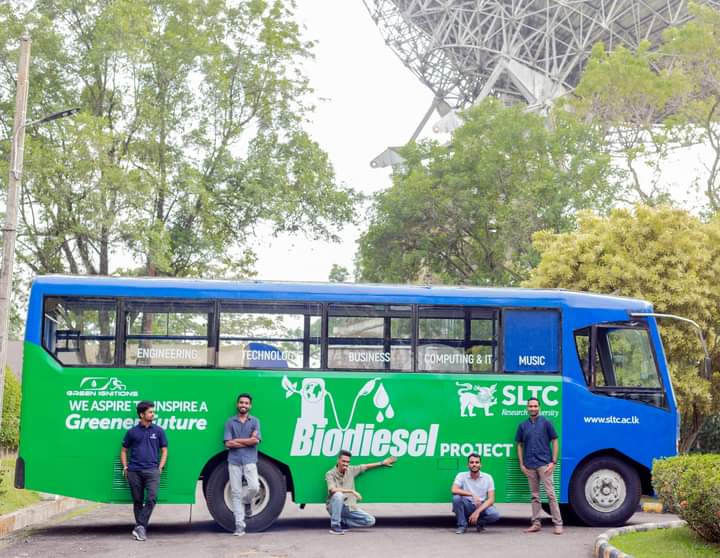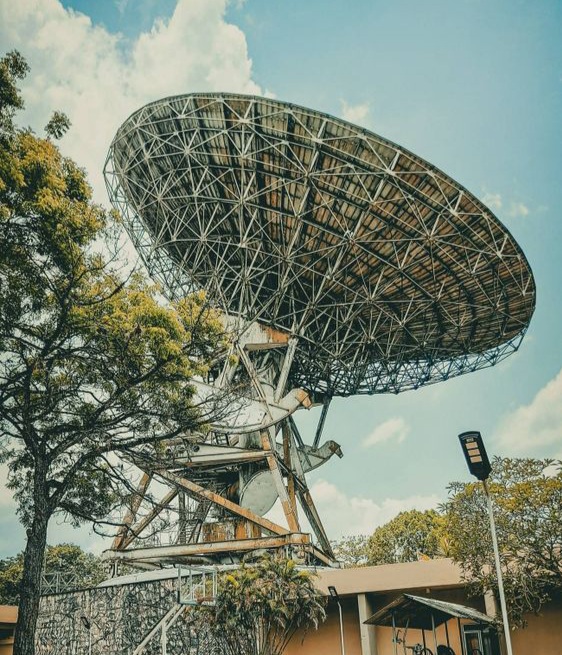Our Students: The Leaders of Tomorrow
Our students are our greatest ambassadors. Representing over twenty diverse vertices of study, from Engineering to Music, they are naturally curious, full of creative energy and are amazing problem solvers with great analytical skills, trailblazers of an inclusive and progressive future. They care about the world and its people. They design, they innovate, they build.
They are true leaders in the making, excited about the opportunities that the world holds for them. They are eager to make a difference – to make their mark in every industry. They like disrupting the norm and transforming what’s good into something greater. Here, they find themselves among the like minded, coming from various corners of the Island and some from the far shores of the world. Anyone who has ever wanted to be a changemaker, innovator or a strategist find themselves right at home at SLTC.
Student Projects
Our students engage in various innovative, entrepreneurial and intellectual projects throughout the year, some independent and others in collaboration with various local and international agencies.
Green Ignitions
Rready to Launch
SLTC’s Own Biodiesel Production Unit

Green Ignitions,an initiative by a team of SLTC engineering undergraduates is a biodiesel start-up incubated at the SLTC Research University. Led by Manusha Wijesinghe, the team of five includes Sithira Sathsara, Sasanga Samarakoon, Theshan Samaraweera, and Kaiz Noorhamith, playing various roles in varying capacities in technology, finance, logistics, management, and administrative tasks.
In a record period of time, the team has successfully produced a batch of high-quality biodiesel, which has been tested at SLINTEC and ITI, where they were found to contain 99.8% purity, meeting the standards for auto diesel.
The team is now focused on practical experimentation and introducing their product to the market. Despite years of research, biodiesel is yet to become a mainstream alternative to traditional diesel fuel, but the Green Ignitions team is determined to change that.
Green Ignitions has successfully launched several projects powered by their product. The first major achievement for Green Ignitions was MOONLAND, Sri Lanka’s first biodiesel-powered music event. The event was a great success and helped raise funds for the team’s future efforts. The event was powered by generators that ran on 100 litres of biodiesel, proving the potential of biodiesel for commercial use. Green Ignitions has also launched a shuttle service transporting students to and from the university and are currently working on developing an automated biodiesel machine that would help them eliminate manual labour from the manufacturing process.
Working out of their lab at Kolonnawa, the team is guided by Dr Nicoloy Gurusinghe and Dr Indika Thushari and is supported by the university.
NASA's Great Lunar Expedition
On a mission to the Moon

A team from SEEDS (Students for the Exploration & Development of Space) at SLTC has been selected to participate in NASA’s Great Lunar Expedition for Everyone (GLEE) mission which expects to launch 200 LunaSats to the Surface of the Moon.
GLEE is a scientific and technological mission to the Moon where 200 LunaSats programmed by students from all around the world will be deployed to the lunar surface to conduct local and distributed science missions.
Teams all over the world will be provided with LunaSats kits, which are tiny spacecraft with integrated sensor suites, which will then be programmed by the teams for a mission of their own design. These teams will be mentored by GLEE programme staff through the programming, test, launch, and data gathering process.
They will collect temperature, magnetic field, and inertial measurements. More data can be taken depending on the local and distributed science missions that each team decides to pursue SEDS SLTC team will also be able to add codes to the LunaSat enabling the sensors to carry out their own Lunar Mission.
Project Alberdo
Building the first Radio Telescope in Sri Lanka
A group of SLTC undergraduates has been successful in developing a radio telescope for the first time in Sri Lanka. A radio telescope is a specialised antenna and radio receiver that is used to receive radio waves from astronomical radio sources in space in radio astronomy. Radio telescopes are the main observing instrument used in radio astronomy, which studies the radio frequency portion of the electromagnetic spectrum emitted by astronomical objects, just as optical telescopes are the main observing instrument used in traditional optical astronomy which studies the light wave portion of the spectrum coming from astronomical objects. This makes it possible for someone to observe deep sky objects such as galaxies, nebulas, stars as well as the sun’s radiation using a Radio telescope.
SLTC’s main university premises was previously used as a Satellite Earth Station. The large dish antennas and parabolic antennas were used to connect to the internet and also communicate with other countries via satellites. This was the peering point for all internet and service providers. As satellite internet became obsolete with the popularity of underwater cables, the Satellite Earth Station was abandoned along with its equipment. The large dish antennas on the premises were no longer used. Wearing away in the harsh weather, they had not been repaired for years with some of them badly rusted. It was one of these antennas that was converted into the radio telescope that can be now used to observe deep space beyond the sky.
The radio telescope receives hydrogen line signals of the radio spectrum. The hydrogen line (1420.40575 MHz) is the precession frequency of neutral hydrogen atoms, the most abundant substance in space. There are billions of stars, nebulas, galaxies and astronomical objects composed of hydrogen, emitting radio waves throughout space. Radio telescopes can measure these radio waves and map the sky similar to optical telescopes.
‘’The hydrogen line, 21-centimetre line, or H I line is the electromagnetic radiation spectral line that is created by a change in the energy state of neutral hydrogen atoms. This electromagnetic radiation is at the precise frequency of 1,420,405,751.7667±0.0009 Hz which is equivalent to the vacuum wavelength of 21.1061140542 cm in free space. This wavelength falls within the microwave region of the electromagnetic spectrum, and is observed frequently in radio astronomy due to their ability to penetrate large clouds of interstellar cosmic dust that are opaque to visible light. This line is also the theoretical basis of hydrogen maser.’’
















